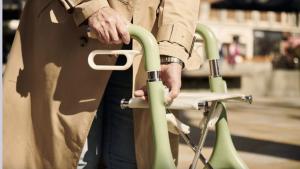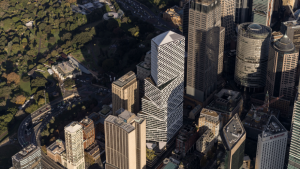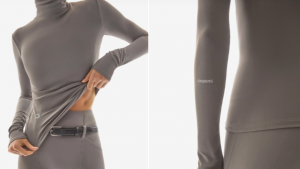Refugee women are very vulnerable to sexual assault and violence and the brutalisation of women takes place in many refugee camps, says the United Nations Volunteers Programme. Because of this danger, the performing of simple everyday tasks, such as going to the toilet, becomes a fearful one.
When product design student Anna Meddaugh created her award-winning reusable, personal urinal, called Night Loo, she was inspired by the above-mentioned scenario.
Meddaugh designed Night Loo while she was a student at the ArtCenter College of Design in Pasadena, California. It provided women with a way of attending to their essential biological functions in the safety of their own shelters.This saves them from having to make a trip to the portable toilets, where danger could be lurking.
Night Loo could also be used in informal settlements where the same danger lingers.
In 2018, Meddaugh, was awarded with a Core77 Design Award for the social impact her invention of the Night Loo could have. She received the Student Notable’s Award for her work on this project.
In her own research, she firstly looked at what could make the journey safer to the latrines. She realised that the best solution was to avoid that trip altogether, but she knew that this would not solve the problem in the long run, as sooner, or later, people need to use the toilet.
“The root causes of sexual and gender-based violence – including gender inequality and degradation of social structures – are not simple to solve, yet the assignment was to design a product that could make some contribution in this regard,” says Meddaugh in an article she wrote for The James Dyson Award.
How the Night Loo works
When a person uses the Night Loo, they squat over it. Once they have finished, for safety reasons they wait until the morning to discard the urine that may have built up during the night. It doesn't smell, because of Meddaugh’s secret weapon: super-absorbent polymer (SAP).
This is what makes Night Loo so efficient and why it can remain in the tent overnight without causing an unpleasant smell for everyone sleeping in the shelter. The SAP absorbs liquids and the accompanying odours. The liquid dries into an odourless powder, preventing the problem people used to have with chamber pots.
According to Meddaugh it is the use of SAP that advanced the process. She noticed that SAP was able to turn liquids to powder in under sixty seconds.
“After urinating and rinsing herself, the user tosses in a small pre-portioned packet of super-absorbent polymer encased in dissolving PVA film, which absorbs the liquid and accompanying odour in seconds, preserving the comfort of all inhabitants within her shelter,” explains Meddaugh on how exactly SAP works.
 What makes this design stand out
What makes this design stand out
Although Meddaugh developed several versions of the Night Loo, the current one is the reason for its success as it is durable and sustainable.
Her use of injected moulded silicone allowed Meddaugh to get the proper shape needed to suit the functionality. From this, she created a folding toilet that had different attachments, such as a splash guard, a closable top and a pop-out spout.
The splash guard acts as a preventive to any liquids escaping, where as the pop-out spout is used to discard the powder substance SAP turns into.
The product also contains petal-like structures which prevents spillage and acts as a splash guard. The use of silicone also allows the loo to be easily cleaned and easily transported.
Meddaugh's next project
Currently, she's working alongside the refugee serving agency, (the United Nations High Commissioner for Refugees (UNHCR), where they are currently looking at additional measures to ensure both safety and proper sanitation.
In the long run Meddaugh wants to bring the product to the market, and work with other refugee organisations.
Read more:
Low-cost artificial leg for amputees in developing countries
A menstrual toolkit developed for refugee women
Swedish clinic designed with the country's refugee population in mind







